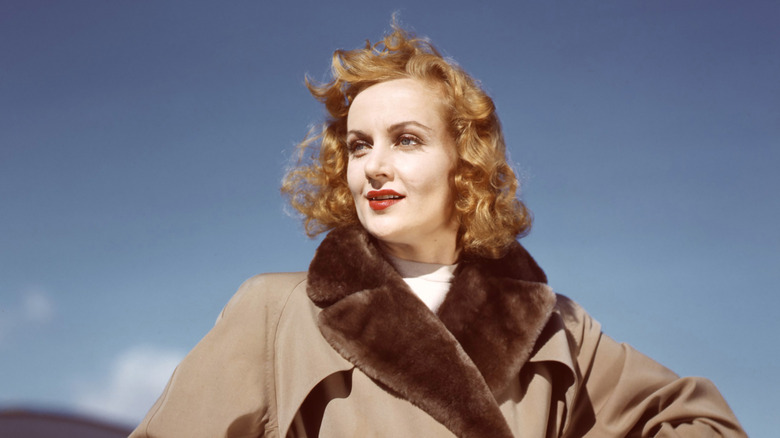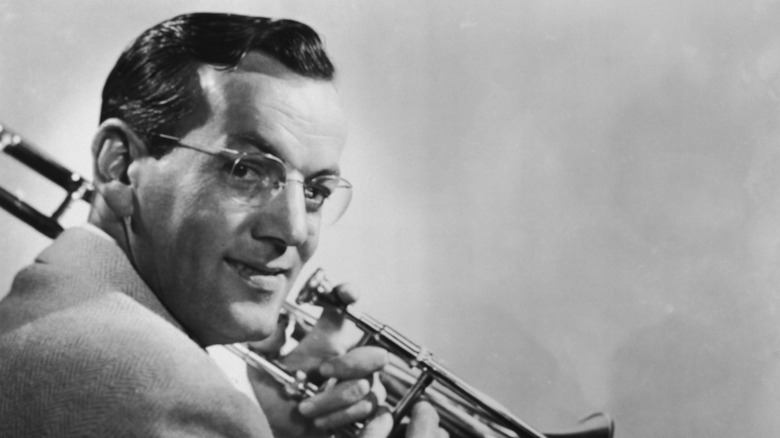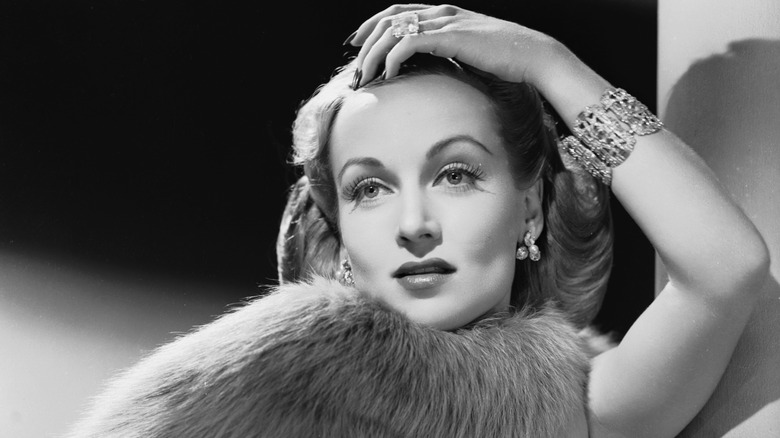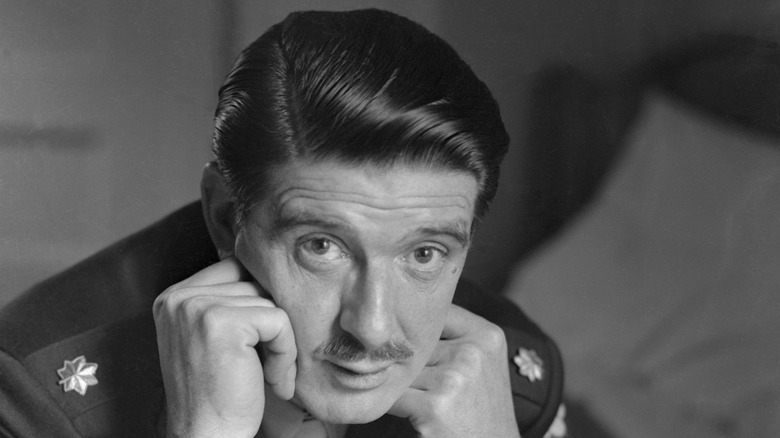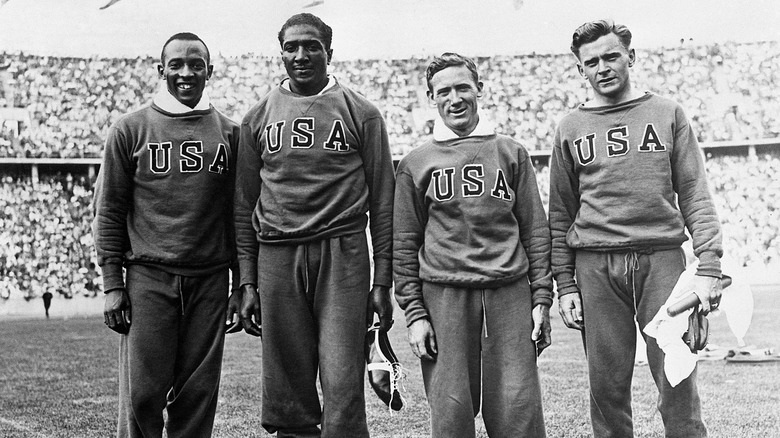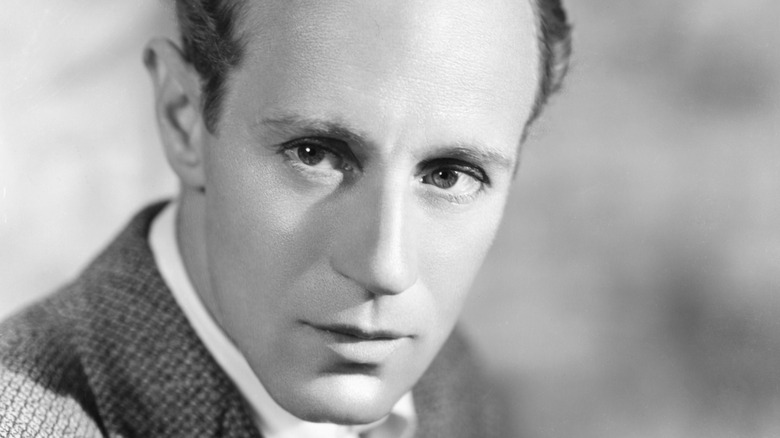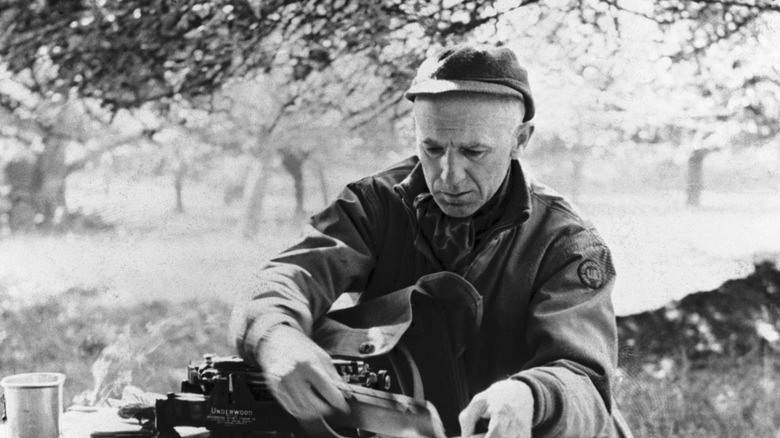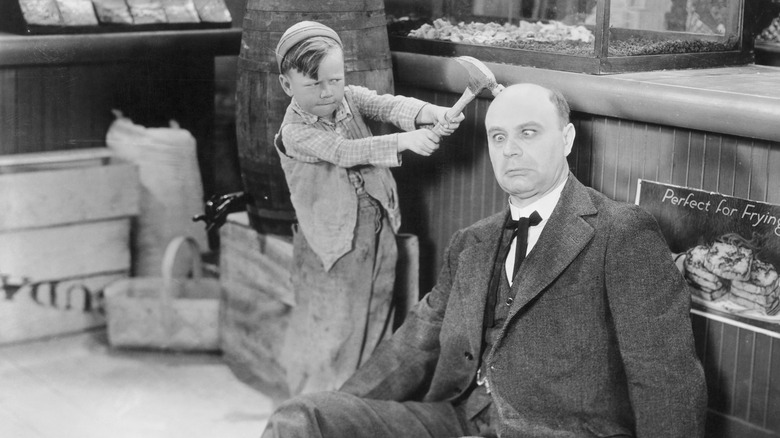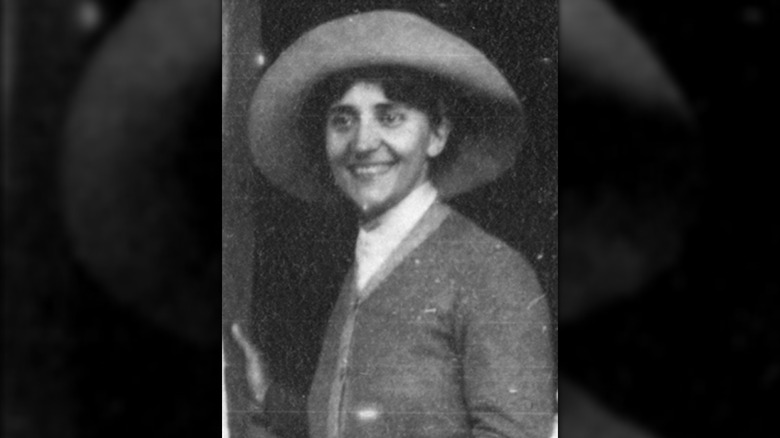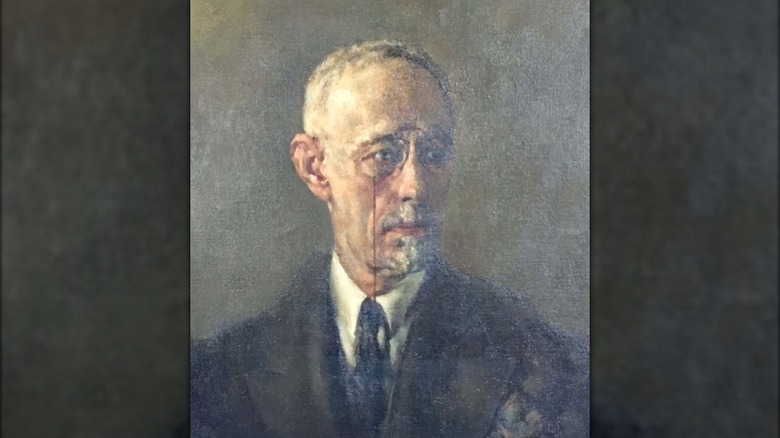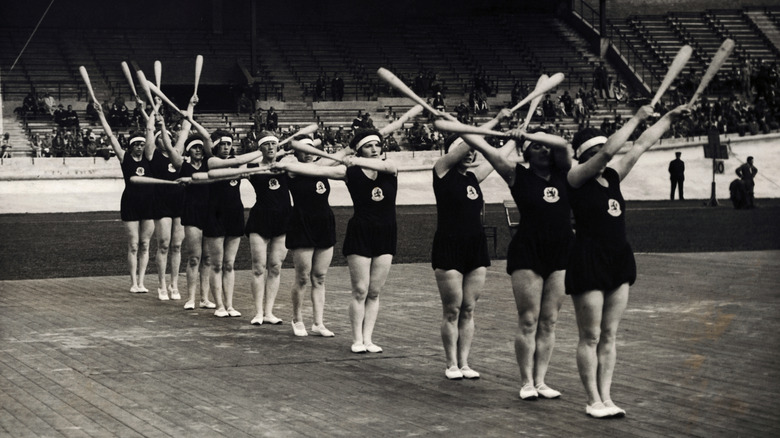Famous People Who Died During WWII
Many famous people actually served during World War II. Some of them were unknowns when they signed up to fight and went on to become household names years after their time in the military. Others were already celebrities at the time hostilities broke out and put their successful careers on pause to serve their country before returning to their famous lives after the war ended.
Some famous people in the latter category never got the chance to return home and start again where they left off. For these luminaries, the war would take everything from them, including their lives. Many of them were world-famous actors, while others were respected leaders in their fields. Besides their renown, what they all had in common was a patriotic desire to do their part for their country during a scary and uncertain time in history. It was a sacrifice they made knowing what the worst-case scenario was, but probably thinking (or at least hoping) it wouldn't happen to them. Sadly, in these cases, it did. Here are some of the famous people who died during WWII.
Glenn Miller
Glenn Miller had people on their feet and dancing all through the 1930s and into the 1940s with his band, Glenn Miller and His Orchestra. The group had 23 No.1 hits, including "In the Mood" and "Chattanooga Choo Choo." But after the attack on Pearl Harbor, he signed up with the U.S. Army. Since he was already in his late 30s, he wasn't assigned a combat role. Instead, the military took advantage of his talents and made him an Army band leader, traveling around to entertain the troops and lift morale.
With such a cushy job, one not much different from his civilian career, Miller shouldn't have been in any real danger during World War II. But on December 15, 1944, he boarded a plane in England that was headed to France, where he was going to perform a concert for the troops that had recently liberated Paris. The plane never arrived at its destination — it disappeared in the fog over the English Channel.
There have been many conspiracies over the years about what happened, including that Miller was a spy, on a secret mission to end the war, or even that the plane was accidentally downed by the U.K.'s Royal Air Force. We may never know the truth about Glenn Miller's mysterious disappearance, but recent evidence indicates the plane was flying low because of the fog and, as a result, its engines iced up, causing it to crash into the English Channel.
Carole Lombard
Carole Lombard starred in 78 films in her two-decade career and was known for her exceptional comedic abilities. While some film fans might recognize classics like "Nothing Sacred" and "My Man Godfrey" (for which she was nominated for an Academy Award), today she is most famous for her marriage to megastar Clark Gable. They were the power couple of their day, with his fame only increasing when he starred as Rhett Butler in "Gone with the Wind." Meanwhile, Lombard was the highest-paid actress in Hollywood.
Tragically, the classic star died at the peak of her fame. Lombard supported President Franklin Roosevelt all the way, so when he asked Congress to declare war after Japan's attack on Pearl Harbor on December 7, 1941, she immediately wanted to do her bit to help. Within weeks, she was headlining the first war bonds sales event in Indianapolis. Her presence helped make it a huge success, drawing 12,000 people out to financially contribute to the war effort.
The original plan was that she would take a three-day train ride back home to Hollywood. But Lombard was in a rush to get back — she knew Gable was having an affair, and she insisted on getting on a plane instead. Tragically, it crashed into a mountain in Nevada, killing everyone on board. Lombard's obituary in Variety described her as "the first casualty of show business in this world war" who had died "in active service on a mission in defense of the United States — selling Defense Bonds."
Eric Knight
Eric Knight was a bestselling author and screenwriter in the 1930s, but he's now most well-known for his book "Lassie Come-Home." Born in England in 1897, he had a tough childhood and immigrated to the U.S. as a teenager. When World War I broke out, he traveled north to enlist in the Canadian military. Knight and his two brothers all served in France, but he was the only one who came home alive.
After his military service ended in 1926, he slowly built a career as a writer until he had achieved real success by the end of the 1930s. But with the outbreak of World War II, he returned to England and volunteered for the British Ministry of Information. This meant working on propaganda films and giving radio broadcasts. After Pearl Harbor was bombed, he returned to the U.S. and enlisted in the military, where he was assigned to the Special Services Division. Meanwhile, he also wrote a novel about the Battle of Britain that was a huge hit and went on to become a feature film.
Knight was sent to Africa for a temporary assignment. Tragically, he died on January 15, 1943, when the transport plane he was on crashed in Dutch Guiana (now Surinam). According to some conspiracies, even some of his descendants believe the plane was shot down by the Germans because they confused it for one that President Franklin Roosevelt was taking to the Casablanca Conference.
Foy Draper
No athlete came out of the 1936 Berlin Olympics more famous than Jesse Owens (pictured left). He won four gold medals at the games, the first American track and field athlete to accomplish the feat, and the record stood for almost 50 years. One of his gold medals was in the 400-meter relay, where he and his teammates set a world record together and left their competition in the dust. One of those talented athletes was Foy Draper (pictured second from the right).
Draper was a talented runner in high school and college, and taking the third leg in the 400-meter relay at the Olympics was the pinnacle of his career. After the Games, he returned to California, but when the U.S. entered World War II, he joined the Army Air Forces as a pilot. By the beginning of 1943, Draper was stationed in Tunisia, North Africa. On January 4, he took off in his bomber with two other men on board. They were headed to a different part of Tunisia to take part in what would become known as the Battle of Kasserine Pass.
The trio's plane never made it to the battle. In fact, it was never seen again. Draper and the two other men were presumed killed after the aircraft went missing. It is not known for sure how, why, or even when they died, although Draper's date of death is often given as February 1, 1943. He was posthumously awarded a Purple Heart.
Leslie Howard
Leslie Howard was an accomplished English actor who starred in dozens of films in the 1930s and '40s. However, he will forever be defined by one particular role: Ashley Wilkes in the epic "Gone With the Wind."
Born in London in 1893, Howard fought in World War I and experienced post-traumatic stress disorder (PTSD) — then known as shell shock — from his time in combat. Despite this, and the fact that he was in his mid-40s when Britain entered World War II, he returned to the U.K. to join the conflict. This involved making propaganda shorts and radio broadcasts, as well as traveling internationally to give talks and improve the relationships between Britain and various other countries. There are rumors, however, that his voyages had more to do with covert operations than simple diplomacy.
On June 1, 1943, Howard boarded a civilian airplane in London that was headed for Lisbon. The daily flight between the two cities had continued throughout the war, with the Luftwaffe leaving the planes alone. But two weeks earlier, they had fired at the exact plane Howard was now on. That time, the flight landed safely. When the Germans attacked it again, those on board were not so lucky. It was the first time the Luftwaffe shot down a passenger plane during the war, possibly because their spies confused the rotund, cigar-smoking man Howard was with for Winston Churchill. Allegedly, the prime minister himself believed this was why the plane was shot down.
Ernie Pyle
Ernie Pyle was a journalist and already in his 40s when the U.S. entered World War II. Born in 1900, he had signed up to fight in World War I just a month before it ended, so he never saw combat. His experience the second time around would more than make up for that disappointment.
For several years, Pyle had been making his name as a journalist who would travel around the world and interview regular, seemingly unimportant people to get their perspective on world events. He continued this theme in his war reporting, traveling alongside the troops everywhere from Europe to Africa to the Pacific theatre. During this period, he interviewed average enlisted men about the war and their experiences. His articles were huge hits with the public, and he won the Pulitzer Prize for his work in 1944. Perhaps more importantly, he won the respect of the soldiers. Pyle was one of the few journalists who knew first-hand what it was like taking part in D-Day because he was alongside the troops as they landed, one of no more than 30 reporters allowed to do so.
On April 18, 1945, during the Battle of Okinawa, Pyle was shot by a Japanese machine gun blast and died instantly. His loss was felt deeply by the soldiers, with even a general said to be near tears when he heard the sad news. Pyle was posthumously awarded the Purple Heart, one of the very few civilians to earn that decoration before the rules were changed to exclude them from consideration in 1997.
Bobby 'Wheezer' Hutchins
Bobby "Wheezer" Hutchins (pictured left) found fame as a child actor. From 1927 to 1933, he acted in 70 shorts, many of them starring roles in Hal Roach's classic "Our Gang" series, later known as "The Little Rascals." Hutchins never worked in film after 1933, so by the time Japan bombed Pearl Harbor and the U.S. entered World War II, he had been out of the business for years.
Once he graduated from high school, Hutchins joined up. He spent 20 months training to become a pilot in California and was set to graduate with his wings on May 20, 1945. Afterward, he would have presumably been sent to fight in the Pacific until the end of the war. On May 17, Hutchins went up in a plane to get the final 30 minutes of flight time he needed to complete his training. It was around 8:20 p.m. when he brought the plane in for a landing. A report at the time said that he was coming in low when he realized another plane was also attempting to land on the airstrip. He adjusted his flight path, but tragically, this led to the two aircraft colliding. While the other plane was able to land with only minor damage, Hutchins' plane crashed and he was killed. He was 20 years old.
Hélène Leune
Hélène Leune had been a war correspondent for major European media outlets for four decades by the time WWII rolled around. Originally from Greece, she went to Paris to get a degree and married a Frenchman. In 1913, she returned to Greece to cover the Balkan Wars for the prestigious French outlets L'Illustration and Le Figaro. She also became a nurse and offered her services to the Red Cross.
Soon, another war brought her back to that occupation. Many of the lesser-known heroines of World War I were nurses, but one way for them to become a household name was to write about their experiences. In 1915, Leune published a successful memoir of what it was like being a Red Cross nurse and her experiences being a prisoner of the Germans for five months, although the book was more propaganda than rigorous journalism. For her service, Leune received the French Medal of Honor for Epidemics (Médaille d'Honneur des Épidémies) and the Croix de Guerre. During the 1920s, she continued her journalism career and gave talks about her experiences. When France declared war on Germany in 1939, Leune was working on a hospital train within days. She died in a bombing raid on Vitry-le-François on May 18, 1940.
Nikolaos Hatzidakis
Nikolaos Hatzidakis was a renowned mathematician. He received his education in Greece before going to France for graduate school, where he focused on differential geometry. But when the Greek population of Crete rose up in rebellion against their Ottoman occupiers in 1896, Hatzidakis paused his studies to join the fighting. One year later, however, the Ottomans crushed the uprising.
Once Hatzidakis returned to academia, his career took off. He lectured at major mathematics conferences, founded the Hellenistic Mathematical Society, accepted teaching positions at various universities, organized conventions, and published a math journal. Hatzidakis was instrumental in encouraging the serious study of mathematics in his home country and was much beloved by his students. He published papers in multiple languages and allegedly spoke 13 different ones. In his free time, he became a successful poet. For his incredible achievements, Greece awarded him the silver cross of the Knights of the Order of the Redeemer.
By the time World War II started, Hatzidakis was mostly retired and living comfortably in Greece. That all changed when Germany and Italy occupied the country in 1941. Despite speaking the languages of the occupiers, he refused to collaborate with or even interact with them. When a famine exacerbated a food shortage in the country, Hatzidakis was one of thousands of Greeks who starved to death. He died on January 25, 1942, aged 69.
The 1928 Olympic gold medal women's gymnastics team
The 1928 Olympics in Amsterdam were the first time women were allowed to compete in the gymnastics event. With the home advantage buoying them on, the Dutch women's team dominated that year, easily winning the gold medal. Of the 12 members, five were Jewish, and their male coach was as well. This might have been somewhat notable at the time, but years later, it meant that almost half of these Olympic champions died in Nazi concentration camps.
Of the six Jewish people associated with the team, five were killed in the Holocaust. The Holocaust was, of course, one of the worst genocides in history, and the fact that the women were gold medalists didn't protect any of them once the Nazis occupied the Netherlands. Jewish athletes were banned from sports clubs, and many of the Olympic team were arrested and held before being sent to their deaths.
Gymnast Estella Agsteribbe was murdered along with her two young children on September 17, 1943 as soon as they arrived at Auschwitz. That same year, her teammates and coach were killed in the Sobibor concentration camp: Judikje Themans-Simons on March 20, Helena Nordheim and Gerrit Kleerekoper on July 2, and Anna Dresden-Polak on July 23. All of them arrived at the camp with their families, and their children were murdered along with them (and in most cases, their spouses too). The only Jewish member of the team to survive the war was Elka de Levie. She died in 1979.
